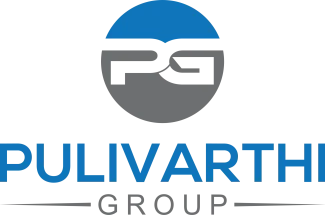In recent years, the integration of artificial intelligence (AI) and workforce automation has become a transformative force across various sectors, notably within the federal domain. As organizations aim to adapt and thrive amidst rapid technological advancements, the lessons learned from recent government layoffs present invaluable insights for private-sector business leaders and HR professionals.
With the newsletter “5 Lessons from Government Layoffs for AI Integration”, we will discuss key strategic workforce planning challenges and offer actionable solutions that can guide organizations in effectively integrating AI while mitigating potential pitfalls. This article serves as a roadmap for HR decision-makers looking to align their workforce strategy with evolving technology and market expectations.
The State of Federal Workforce Adjustments
Government entities have often undergone layoffs as part of workforce optimization and budget reallocation efforts. These adjustments reveal crucial insights into strategic workforce planning, role clarity, and organizational alignment—elements that are essential for businesses navigating the transition to an AI-driven workforce in the United States.
According to a report by the U.S. Bureau of Labor Statistics, federal employment has fluctuated significantly over the years, with recent cuts reflecting broader economic challenges. Such state-level changes highlight the necessity for businesses to evaluate roles, clarify responsibilities, and prepare for the future of work influenced by automation.
Lesson 1: Embrace Strategic Workforce Planning
Effective strategic workforce planning is crucial for organizations embracing AI. Understanding the future skills needed and creating pathways to acquire them should be a priority. The federal layoffs highlighted the consequences of inadequate planning, suggesting that businesses can no longer afford to be reactive.
- Identify Skills Gaps: Conduct assessments to identify current and future skills the organization requires.
- Train and Reskill: Develop training programs to help employees transition to new roles that AI creates or alters.
- Use Data-Driven Strategies: Employ data analytics to inform workforce planning and match talent with organizational goals.
By adopting a proactive strategic workforce planning approach, organizations can mitigate the risks often associated with AI implementation, ensuring that employees are prepared for future demands.
Lesson 2: Define Role Clarity Early
Following government layoffs, one recurring challenge was the lack of role clarity that led to operational inefficiencies. Similar issues can arise in private sectors transitioning to an AI-integrated workforce. Therefore, it is vital to address role clarity from the onset of any AI integration initiative.
- Clearly Outline Job Descriptions: Clearly define and communicate the responsibilities associated with each role.
- Integrate AI into Role Definitions: Specify how AI will enhance or change responsibilities, and communicate this information effectively.
- Engage Employees in Role Development: Involve employees in discussions about their roles to ensure buy-in and understanding.
With clear role definitions, organizations can foster a smoother transition while enhancing employee engagement and satisfaction.
Lesson 3: Align Organizational Goals with AI Strategy
Organizational misalignment can significantly hinder the success of AI initiatives. The federal layoffs showcased how organizations often fail to align workforce restructuring with broader strategic goals. Businesses should take these lessons to heart to prevent similar missteps.
- Set Clear Goals: Define specific, measurable goals for AI integration that align with overall business objectives.
- Communicate Vision: Regularly share progress updates and maintain a consistent dialogue about how AI initiatives correlate with the organization’s mission and values.
- Encourage Collaborative Culture: Foster a culture of collaboration among departments to ensure each area understands its role in the AI strategy.
By implementing these strategies, organizations can create an aligned workforce that is more adaptable and receptive to changes brought about by technology.
Lesson 4: Prioritize Employee Retention During Transitions
Market volatility often leads to uncertainty among employees, causing anxiety regarding job security amidst technological advancements. An analysis of government layoffs shows a direct correlation between workforce adjustments and employee turnover. To combat this, organizations must focus on employee retention strategies during the AI transition.
- Transparent Communication: Engage in open discussions about how AI may impact positions and the measures being taken to support staff.
- Offer Career Development: Invest in career development programs that will help employees reskill, thereby retaining valuable talent.
- Build a Supportive Environment: Create resources and platforms for employees to express their concerns and receive guidance.
Addressing these considerations not only enhances retention but also promotes a more engaged, motivated workforce ready to embrace change.
Lesson 5: Monitor and Evaluate AI Integration
The final lesson learned from recent federal layoffs revolves around the importance of monitoring and evaluating AI integration efforts. Many organizations lost sight of the broader vision during implementation, leading to disjointed workflows and misaligned expectations.
- Implement Feedback Loops: Establish mechanisms for continuous feedback from employees regarding the integration process.
- Regularly Assess Impact: Conduct regular assessments of the effectiveness of AI initiatives, focusing on performance metrics and employee sentiment.
- Adapt and Innovate: Be prepared to adapt AI strategies based on assessment outcomes, ensuring the organization remains agile and responsive to change.
Ongoing evaluation of workforce automation initiatives will provide critical insights, enabling timely adjustments and enhanced operational efficiency.
Conclusion
The transition to workforce automation and AI implementation is a significant undertaking that requires careful planning and execution. By drawing lessons from government layoffs, organizations can cultivate strategic workforce planning, improve role clarity, align organizational goals, prioritize employee retention, and ensure effective monitoring of AI integration.
As business leaders and HR professionals strive to navigate the complexities of a changing workforce, it is essential to evaluate your workforce strategy for AI integration now. Creating a coherent and adaptable workforce strategy will position organizations for success in the face of inevitable change.
For guidance in optimizing your workforce strategy amid AI transitions, reach out to the Pulivarthi Group. Our expertise in specialized staffing solutions ensures a smooth transition while aligning with your organizational goals. Let’s work together to build a resilient workforce capable of thriving in an AI-driven future.
















